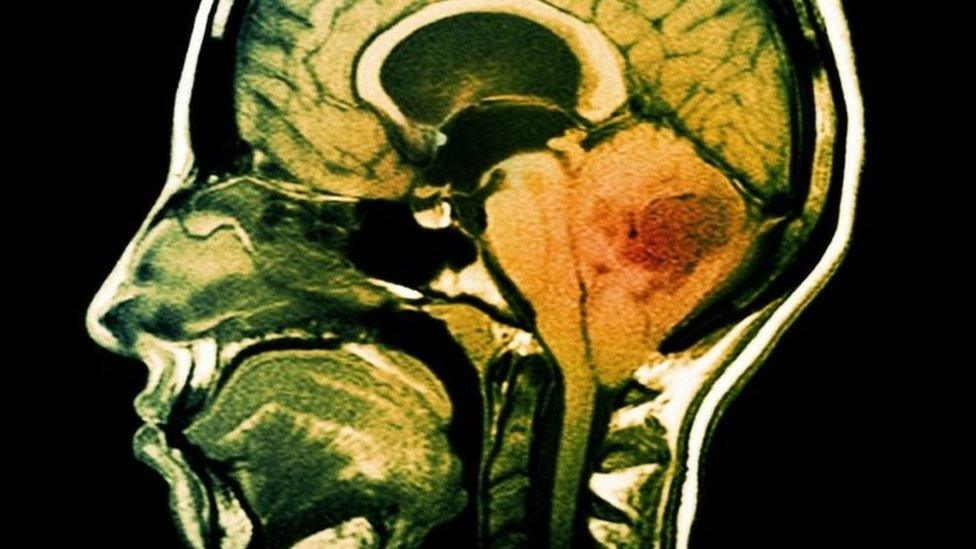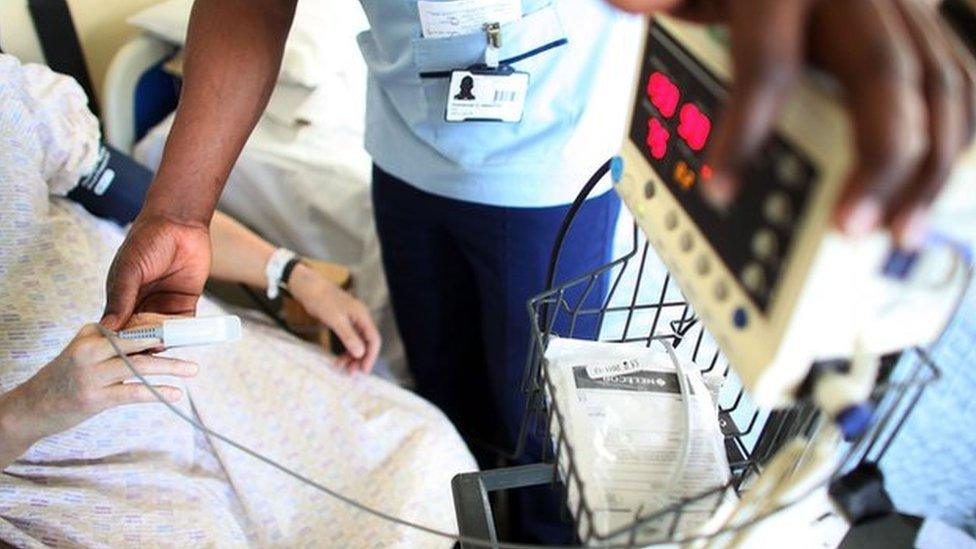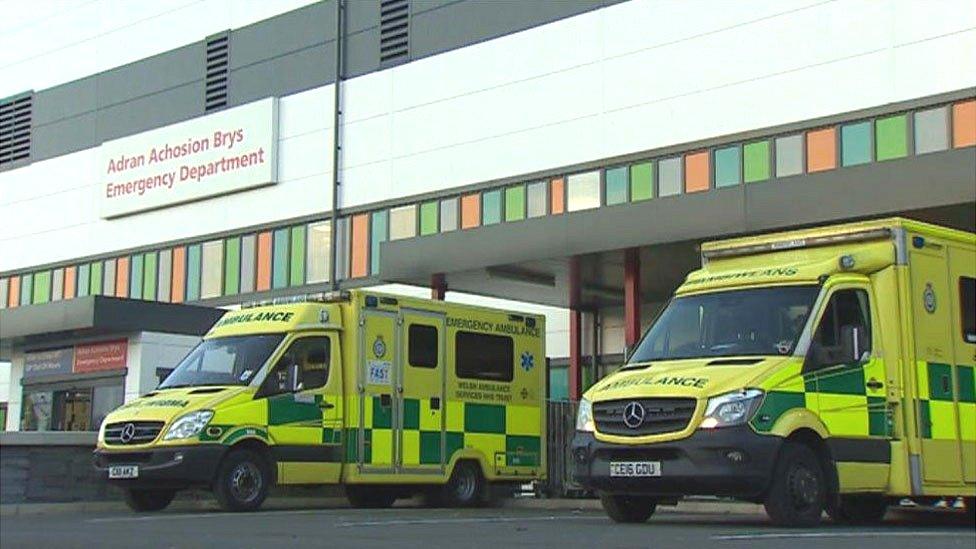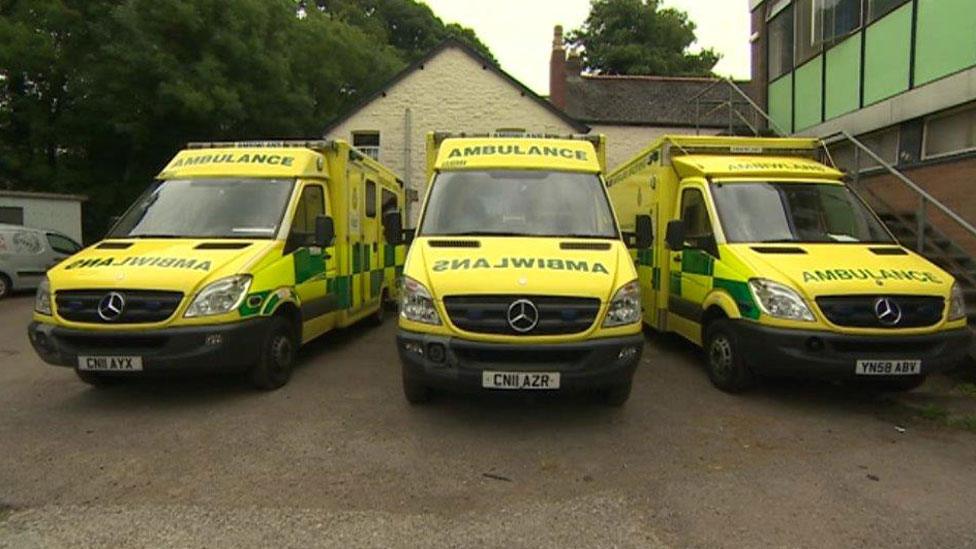A&E wait times steady but NHS Wales cancer targets behind
- Published

Waiting times for patients in accident and emergency units in Wales held steady last month, according to latest official health figures.
They show improved ambulance response times but NHS Wales is still behind on waiting time targets for patients to start cancer treatment.
For the first time, seven sets of NHS statistics have been released on a single day., external
The aim is to provide a more coherent picture of the health service in Wales.
So what do the figures tell us?

AMBULANCE RESPONSE TIMES
The last monthly performance figures in March showed 77.9% of responses to life-critical red calls arrived within eight minutes - the highest proportion since November. The target is 65%.
The median response time for red calls was 4.65 minutes - compared to 6.27 minutes the previous year.
Only about 5% of calls received by ambulance control are now designated red after the system was changed in October 2015 to prioritise the most urgent calls.

ACCIDENT AND EMERGENCY WAITING TIMES
A total of 3,206 patients patients were waiting more than 12 hours in A&E, according to March's figures - up by about 230 on the month. But the proportion of patients waiting under 12 hours improved slightly.
Just under 81% of patients waited under four hours to be seen - the same as the previous month. There is a target of seeing 95% of patients within four hours and no patients should wait more than 12 hours.

WAITING TIMES AFTER BEING REFERRED BY GP FOR HOSPITAL TREATMENT
These figures show how long patients are waiting for the start of their hospital treatment - from the moment they are referred by their GP to the time their treatment starts.
The numbers waiting more than 36 weeks hit a peak in August 2015 when it was 6.4% of all patients. That figure has continued to fall and was 4.5% in February, while more people - 86.9% - were seen within 26 weeks (or six months).
This next set of figures looks at the median wait for those waiting to start treatment - this gives you the middle when you look at both the shortest and longest waits. It was 9.81 weeks in February, an improvement on the year and also the previous month; it has not been below nine weeks since March 2014.

DELAYED TRANSFERS OF CARE
These are patients - often elderly people or those with mental health issues - who are delayed for different reasons from moving from hospital on to the next stage of their care. This involved nearly 400 patients in March, with 176 delayed for fewer than three weeks.
This time last year, there were more than 530 patients in hospital waiting to find either a nursing home place or care in the community. There has been a steady drop over the decade, when the figure was more than 650.

WAITING TIMES FOR DIAGNOSIS AND THERAPY SERVICES
These figures look at patients waiting more than eight weeks for specified diagnostic services - which have been generally falling after peaking at nearly 28,000 at the start of 2014.
Those waiting more than 14 weeks for therapy services has been between 2,000 and 3,000 in recent years.

CANCER WAITING TIMES
This is how long patients suspected of having cancer by their GP and subject of an urgent referral to hospital have to wait for treatment.
The last monthly figures showed nearly 87% started treatment within 62 days. The target is 95%, which was only close to being reached five years ago.
There is also a figure for those newly diagnosed with cancer - but not by this urgent route - and here there is a target of treatment starting within 31 days. This was 97% in February, just short of the 98% target.
Macmillan Wales said it was "disappointing" that treatment waiting times continued to miss national targets.
"Early diagnosis and early treatment make a huge difference to outcomes for people with cancer," said the support charity.
"Delays impact not only on survival, but also the quality of life people will have once their treatment has ended."
It pointed to two health boards piloting a Danish model for quicker diagnosis as a way forward.

OUTPATIENT REFERRALS
These statistics look at the numbers of referrals for a first outpatient consultant appointment - including for different specialities.
- Published16 February 2017

- Published11 April 2017

- Published28 January 2016

- Published30 November 2016

- Published27 July 2016
